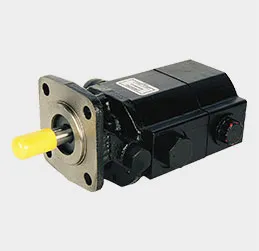Exploring the Benefits of Magnesium in Sand Casting Processes for Enhanced Performance
The Advantages of Magnesium Sand Casting A Comprehensive Overview
Magnesium sand casting has emerged as a prominent method in the foundry industry, especially when lightweight materials are desired without compromising strength and durability. With magnesium alloys becoming increasingly popular for various applications, understanding the nuances of magnesium sand casting is essential for manufacturers and engineers alike.
The Basics of Magnesium Sand Casting
Magnesium sand casting involves the use of sand molds to shape molten magnesium alloys into specified geometries. The process starts with creating a pattern, typically made from a material that can withstand high temperatures, which is then used to form a sand mold. This mold is filled with molten magnesium, which, upon cooling, solidifies into the desired part.
One of the significant benefits of using magnesium in sand casting is its favorable weight-to-strength ratio; magnesium is one of the lightest structural metals, making it incredibly invaluable for industries such as aerospace, automotive, and electronics.
Key Advantages of Magnesium Sand Casting
1. Lightweight Properties Magnesium is renowned for being significantly lighter than aluminum and other metals. This attribute inherently provides an edge in applications where weight savings are critical, such as in the aerospace sector, where every gram counts towards fuel efficiency.
2. Superior Strength-to-Weight Ratio Magnesium alloys possess an impressive strength-to-weight ratio, enabling manufacturers to produce components that are robust yet lightweight. This property allows engineers to design parts that maintain structural integrity under load while minimizing weight.
4. Corrosion Resistance Although magnesium is generally reactive, certain magnesium alloys exhibit excellent corrosion resistance, especially when alloyed with elements like aluminum, zinc, and rare earth metals. This feature makes magnesium components more durable in harsh environments.
magnesium sand casting

5. Cost-Effectiveness The sand casting process is relatively less expensive compared to other manufacturing methods like die casting. The materials and processes involved in sand casting are more economical, particularly for low production volumes or unique part designs.
6. Design Flexibility Sand casting allows for more complex geometries compared to other traditional casting methods. This design flexibility is invaluable for creating intricate shapes that meet specific engineering requirements without the need for extensive machining.
Challenges of Magnesium Sand Casting
While magnesium sand casting presents many advantages, it is not without its challenges. One of the primary challenges is the risk of oxidation. Magnesium reacts with moisture and air, which can lead to degradation of the material properties. Therefore, it is crucial to conduct sand casting in controlled environments to minimize exposure to oxygen.
Additionally, the melting point of magnesium is lower than that of many other metals, necessitating careful temperature control during the casting process to avoid burning and oxidation. These requirements demand specialized equipment and skilled personnel, which can increase operational costs.
Industrial Applications
Magnesium sand casting finds applications across a multitude of industries. In the automotive sector, it is used to produce engine blocks, transmission casings, and structural components, minimizing vehicle weight and enhancing fuel efficiency. In aerospace, magnesium parts are utilized in aircraft components, enhancing performance and reducing overall aircraft weight. The electronics industry leverages magnesium for housings and enclosures, benefiting from both lightweight properties and effective heat dissipation.
Conclusion
In summary, magnesium sand casting offers a host of advantages that make it a valuable technique in modern manufacturing. Its lightweight nature, robust strength, and design flexibility cater to the increasing demands for efficiency and performance in various industries. Despite the challenges related to oxidation and processing, advancements in technology continue to enhance the viability of magnesium sand casting. As industries progress towards more sustainable and efficient solutions, magnesium sand casting is poised to play a pivotal role in the future of materials engineering.
-
OEM Sand Cast Pump Valve Fittings - Baoding Hairun | Precision Engineering, CustomizableNewsJul.30,2025
-
OEM Sand Cast Pump Valve Fittings - Baoding Hairun Machinery And Equipment Trading Co., Ltd.NewsJul.30,2025
-
OEM Sand Cast Pump Valve Fittings - Baoding Hairun Machinery And Equipment Trading Co., Ltd.NewsJul.30,2025
-
OEM Sand Cast Pump Valve Fittings - Baoding Hairun Machinery|Precision Engineering&Fluid ControlNewsJul.30,2025
-
OEM Sand Cast Pump Valve Fittings - Baoding Hairun Machinery And Equipment Trading Co., Ltd.NewsJul.30,2025
-
OEM Sand Cast Pump Valve Fittings-Baoding Hairun Machinery And Equipment Trading Co., Ltd.NewsJul.30,2025















